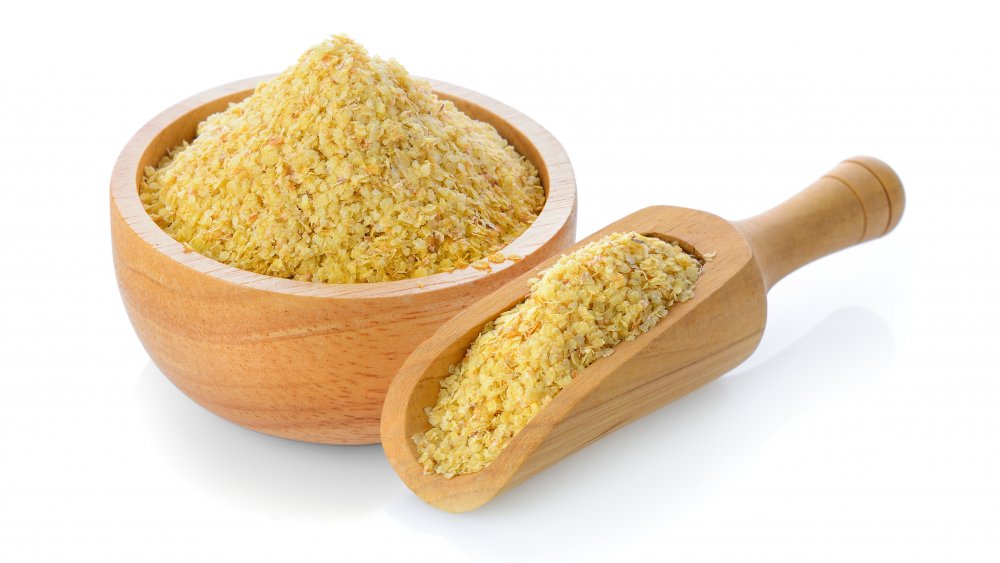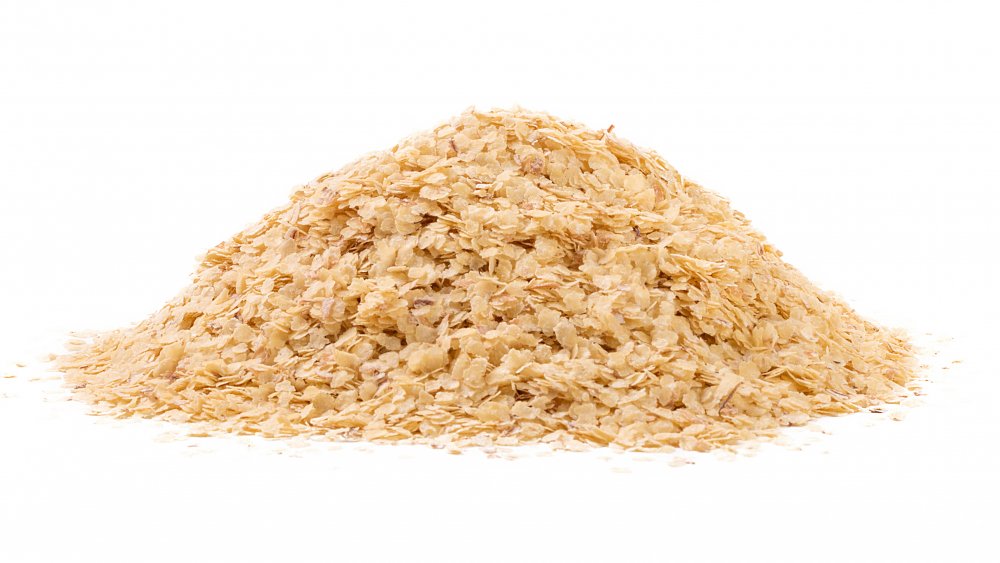Why You Should Be Eating Wheat Germ
Wheat germ. Don't be turned off by the name; germ, in this case, is related to germination and has nothing to do with bacteria or virus germs. Wheat germ is the small part of the wheat kernel that helps the plant grow, which means it's packed full of nutrients. In fact, according to Bob's Red Mill, wheat germ is the most nutrient-dense part of the wheat kernel, making it an ideal addition to any healthy diet. It's one of those things that, sadly, gets stripped out when the wheat is processed, so look for whole wheat products or go straight to the source by enjoying wheat germ alone.
According to Eat This Much, two tablespoons of wheat germ is 51.8 calories that also gets you 96% of the recommended daily value of manganese, 19% of thiamine, 15% of vitamin B6, 13% of phosphorous, 12% of your day's iron, 11% of folate, 8% of fiber, along with a handful of other vitamins and minerals. That's a lot of goodness all packed into just a couple of spoonfuls of wheat germ.
But what exactly are the benefits of all that?
Wheat germ packs in plenty of positive health benefits
The benefits of wheat germ all come back to its vitamins and minerals. From the NIH, we learn that manganese helps make energy, protects cells from damage, and helps with keeping your bones strong and your immune system healthy. Thiamine helps convert your food into energy to aid the health of your nervous system (via NHS). Vitamin B6 helps out with metabolism (via NIH), and folate is vital for red blood cell formation and healthy cell growth (via Mayo Clinic). Phosphorus, according to Healthline, helps with keeping bones strong, making energy, and building strong teeth, among other things. And fiber helps keep your gut healthy and can help you feel full; hello healthy weight loss!
Wheat germ can be eaten raw or toasted, and it has a nutty flavor to it (via Food). You don't have to eat an entire bowlful just by itself to get the nutritional benefits; wheat germ is tasty sprinkled on top of cereal or on yogurt. You can also find it in granola mixes, and even substitute it for bread crumbs in meatloaf (via Healthline).

